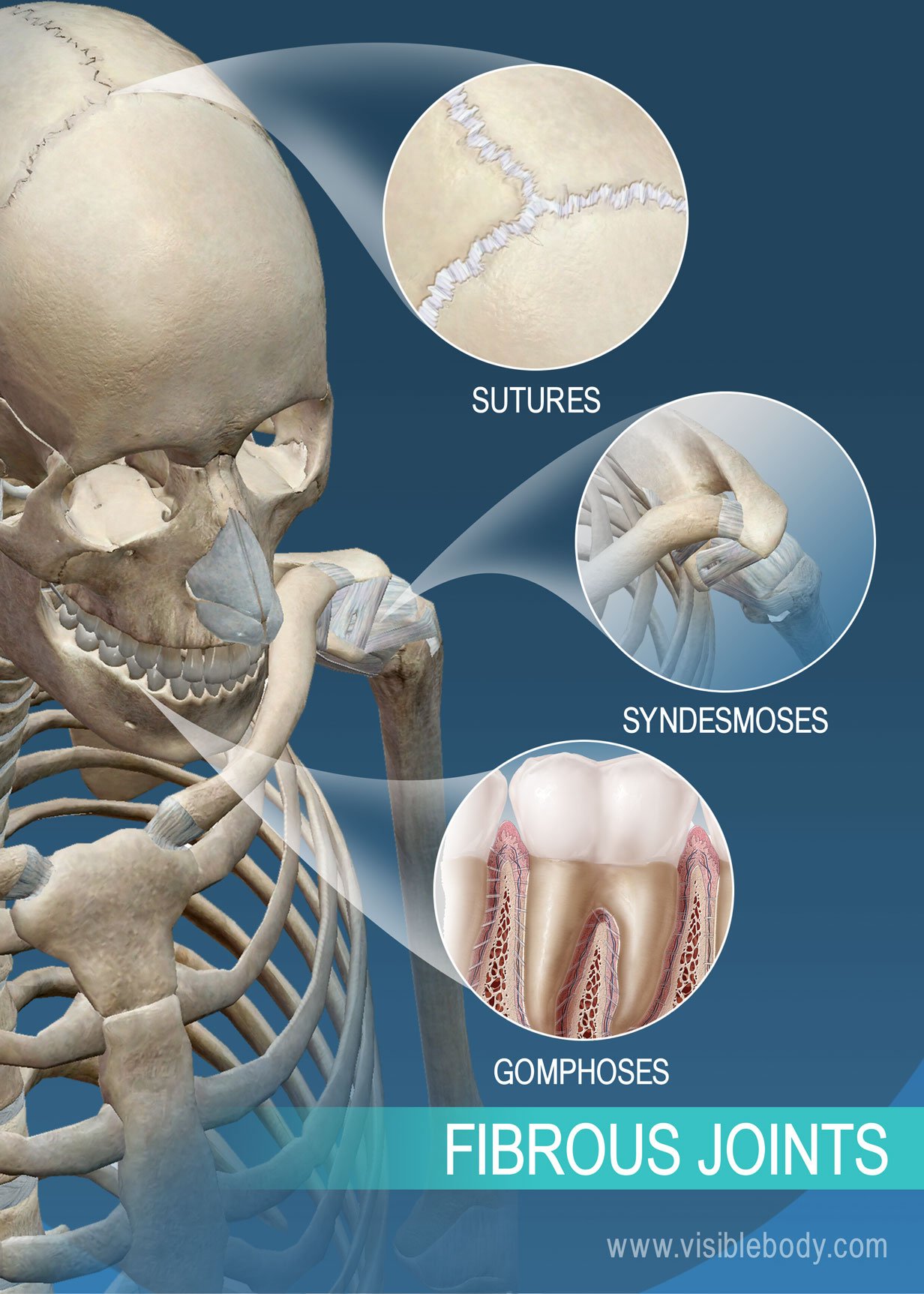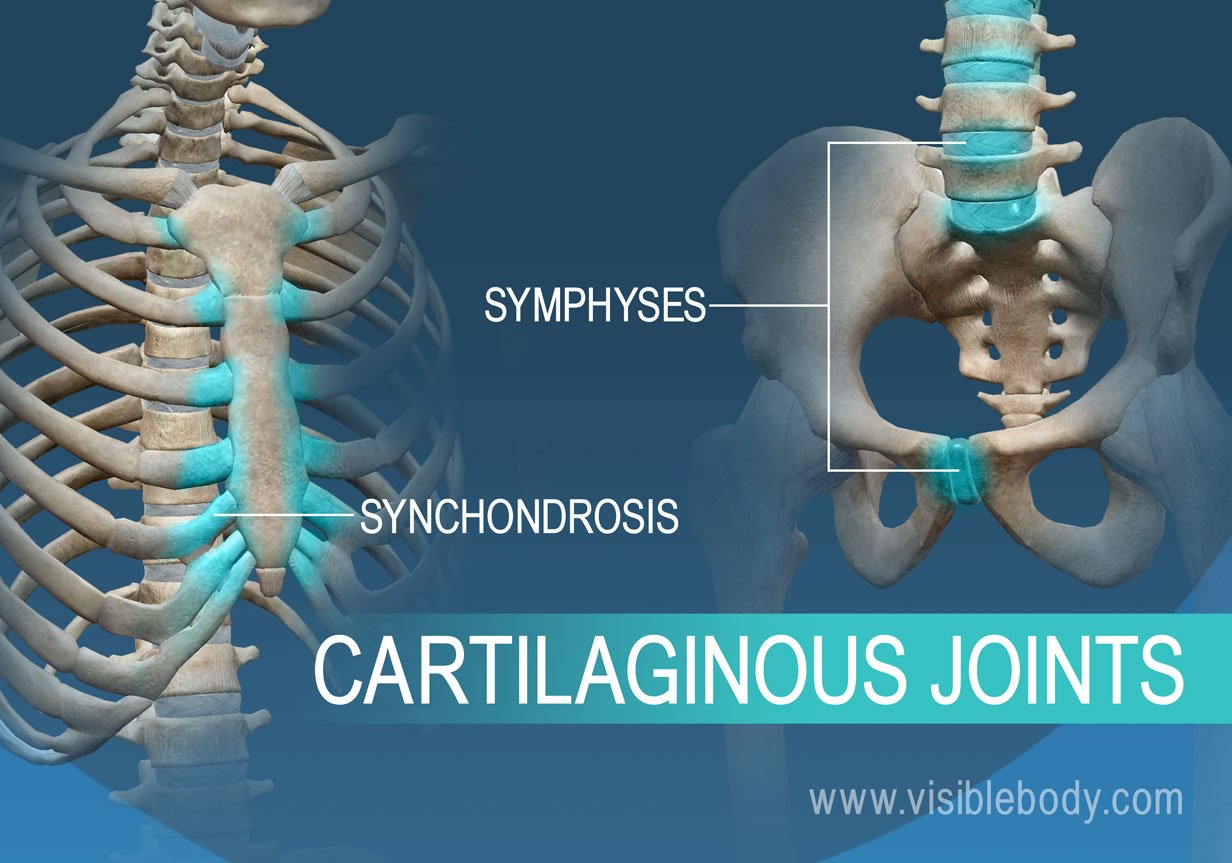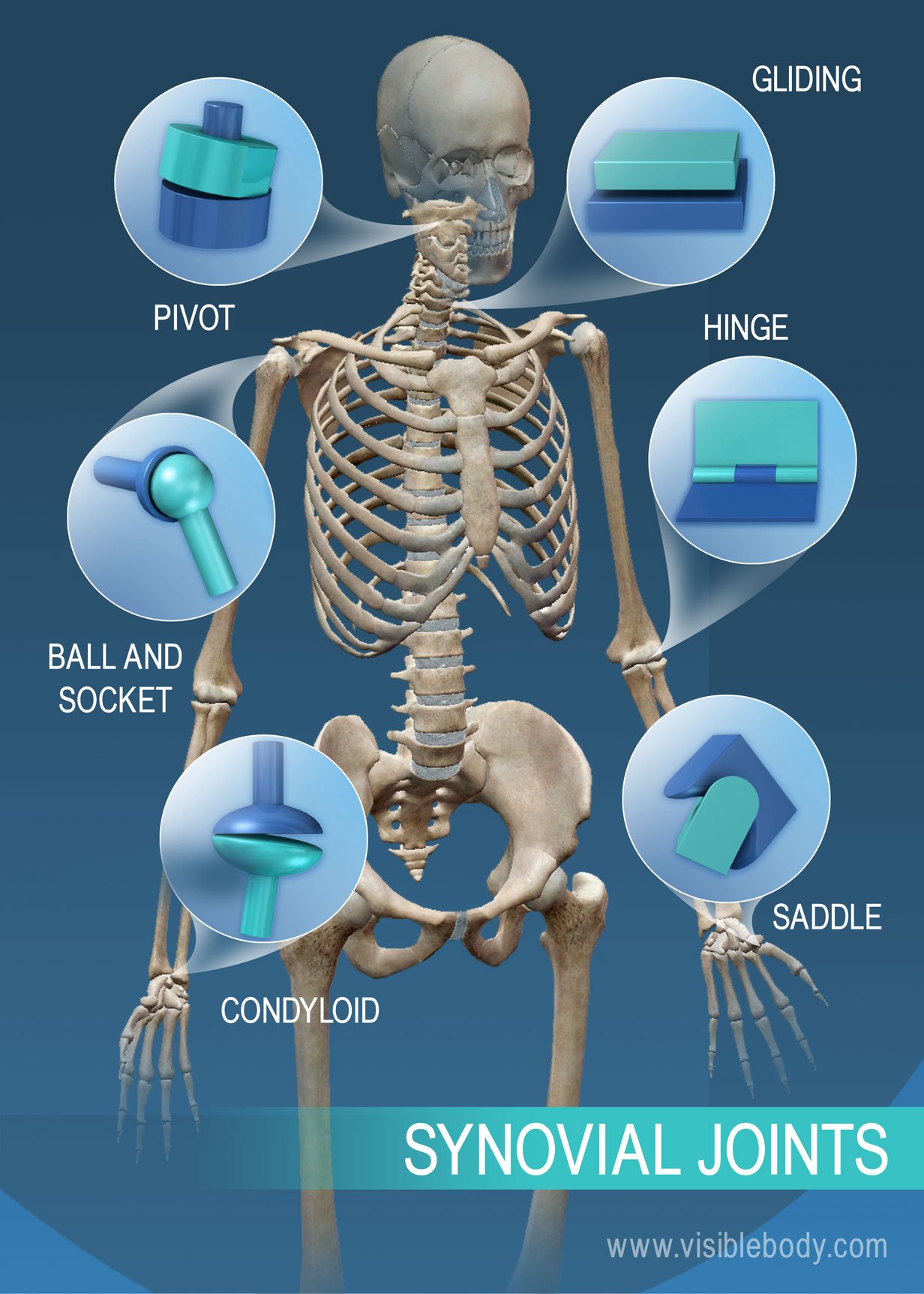
Joints hold the skeleton together and support movement. There are two ways to categorize joints. The first is by joint function, also referred to as range of motion. The second way to categorize joints is by the material that holds the bones of the joints together; that is an organization of joints by structure.
Joints in the human skeleton can be grouped by function (range of motion) and by structure (material). Here are some joints and their categorizations.
|
Joint |
Range of Motion and Material |
|
Skull Sutures |
Immovable fibrous joints |
|
Knee |
Full movement synovial capsule hinge joint |
|
Vertebrae |
Some movement cartilaginous joint |

Immovable joints (called synarthroses) include skull sutures, the articulations between the teeth and the mandible, and the joint found between the first pair of ribs and the sternum. Examples of joints allowing slight movement (called amphiarthroses) include the distal joint between the tibia and the fibula and the pubic symphisis of the pelvic girdle. Joints allowing full movement (called diarthroses) include many bone articulations in the upper and lower limbs. Examples of these include the elbow, shoulder, and ankle.
|
Type of Joint Function |
Examples |
|
Synarthrosis (range of joint motion: no movement) |
Skull Sutures, articulations of bony sockets and teeth in facial skeleton |
|
Amphiarthrosis (range of joint motion: little Movement) |
distal joint between the tibia and the fibula and the pubic symphysis |
|
Diarthrosis (range of joint motion full movement) |
Elbow, shoulder, ankle |

Fibrous Joints. Between the articulations of fibrous joints is thick connective tissue, which is why most (but not all) fibrous joints are immovable (synarthroses). There are three types of fibrous joints:
(1) Sutures are nonmoving joints that connect bones of the skull. These joints have serrated edges that lock together with fibers of connective tissue.
(2) The fibrous articulations between the teeth and the mandible or maxilla are called gomphoses and are also immovable.
(3) A syndesmosis is a joint in which a ligament connects two bones, allowing for a little movement (amphiarthroses). The distal joint between the tibia and fibula is an example of a syndesmosis.

Cartiliginous Joints. Joints that unite bones with cartilage are called cartilaginous joints. There are two types of cartilaginous joints:
(1) A synchrondosis is an immovable cartilaginous joint. One example is the joint between the first pair of ribs and the sternum.
(2) A symphysis consists of a compressable fibrocartilaginous pad that connects two bones. This type of joint allows for some movement. The hip bones, connected by the pubic symphysis, and the vertebrae, connected by intervertebral discs, are two examples of symphyses.

Synovial Joints. Synovial joints are characterized by the presence of an articular capsule between the two joined bones. Bone surfaces at synovial joints are protected by a coating of articular cartilage. Synovial joints are often supported and reinforced by surrounding ligaments, which limit movement to prevent injury. There are six types of synovial joints:
(1) Gliding joints move against each other on a single plane. Major gliding joints include the intervertebral joints and the bones of the wrists and ankles.
(2) Hinge joints move on just one axis. These joints allow for flexion and extension. Major hinge joints include the elbow and finger joints.
(3) A pivot joint provides rotation. At the top of the spine, the atlas and axis form a pivot joint that allows for rotation of the head.
(4) A condyloid joint allows for circular motion, flexion, and extension. The wrist joint between the radius and the carpal bones is an example of a condyloid joint.
(5) A saddle joint allows for flexion, extension, and other movements, but no rotation. In the hand, the thumb’s saddle joint (between the first metacarpal and the trapezium) lets the thumb cross over the palm, making it opposable.
(6) The ball-and-socket joint is a freely moving joint that can rotate on any axis. The hip and shoulder joints are examples of ball and socket joints.
“Ligament vs. Tendon: What’s the Difference?” from Healthline.
Information on joint replacement from the American Academy of Orthopaedic Surgeons.
Visible Body Web Suite offers thousands of models to help understand and communicate how the human body looks and works.
When you select "Subscribe" you will start receiving our email newsletter. Use the links at the bottom of any email to manage the type of emails you receive or to unsubscribe. See our privacy policy for additional details.